North and south locks Schardam
In the village of Schardam, in the former Zeedijk, there are two old locks, the Noorderluis and the Zuidersluis. The Schermerboezem, the large water storage area in the heart of North Holland, drains into the Markermeer there, and there have been locks at this spot since the 14th century.
Around the year 1300, there were a number of rapidly growing lakes between Alkmaar, Hoorn and Monnikendam. They were connected to the Zuiderzee via several watercourses, such as the Korsloot, which connected the Beemster Lake to the sea. The land was low and vulnerable to erosion and flooding. The Zuiderzee water was increasingly difficult to keep out. That is why the Korsloot was dammed in the early 14th century. As early as 1320, mention was made of Schardam, a village that arose near the dam.
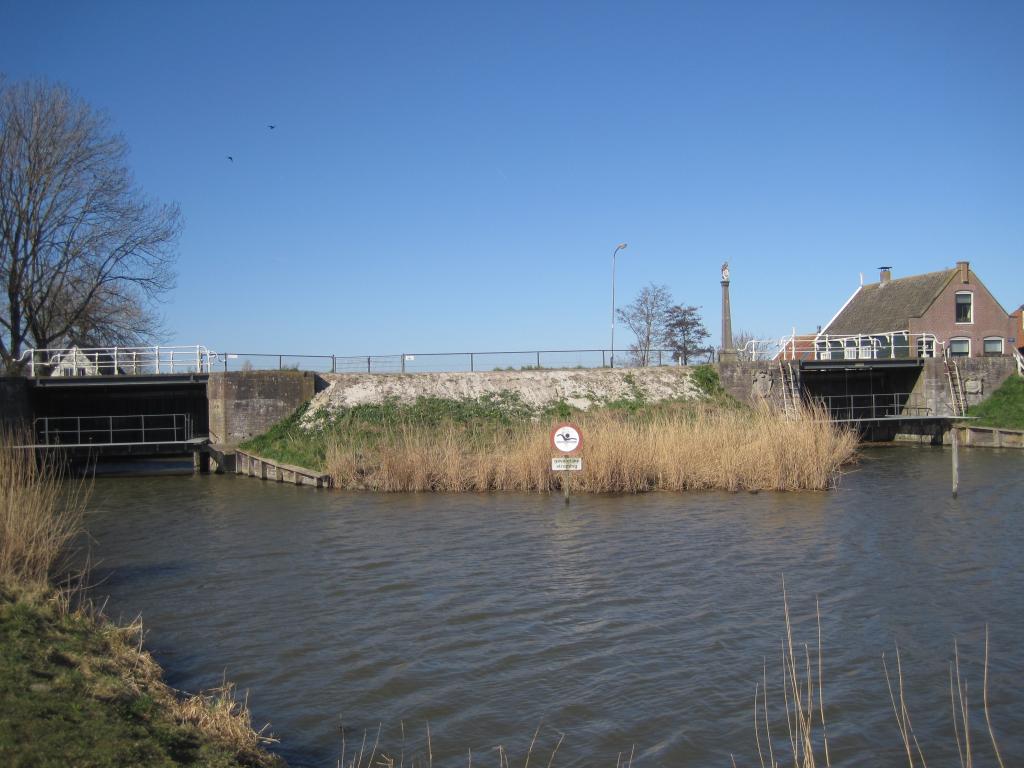
Initially there was an opening in the dam, for the purpose of drainage and navigation, but this was still not an adequate solution. In 1357, Count William V gave permission to build two wooden sluices in the dam, which made it easier to control the water flow. From then on, one could, for example, sluice water at low tide and prevent sea water from entering the land during high tide. A series of villages in the hinterland were responsible for building the locks. One disadvantage was that it was no longer possible to sail through it.
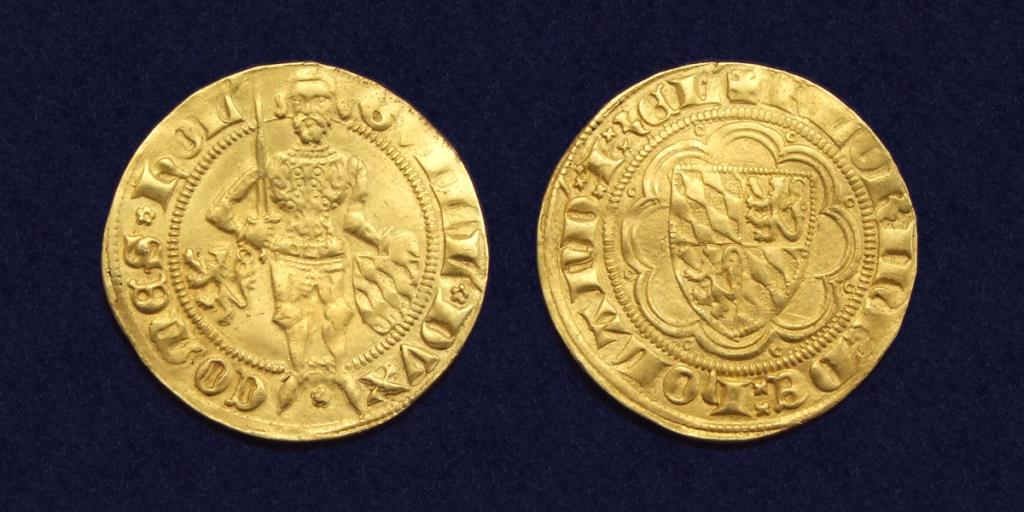
Of these two locks, the Noordersluis was on the border of the banne Hoorn and the area of the lord of Oosthuizen. Banne is an old name for a jurisdiction. These boundaries hardly changed for centuries. Hence, on the lock in 1761, Hoorn erected a handsome, still existing ban post, topped by a unicorn with the city crest between its forelegs. Those who were banished from the city of Hoorn were thus not allowed to proceed. The banpost was restored in 2024 after thorough color research. The brown hue of its body was replaced with the original red color. This color corresponds to the official city arms of Hoorn.
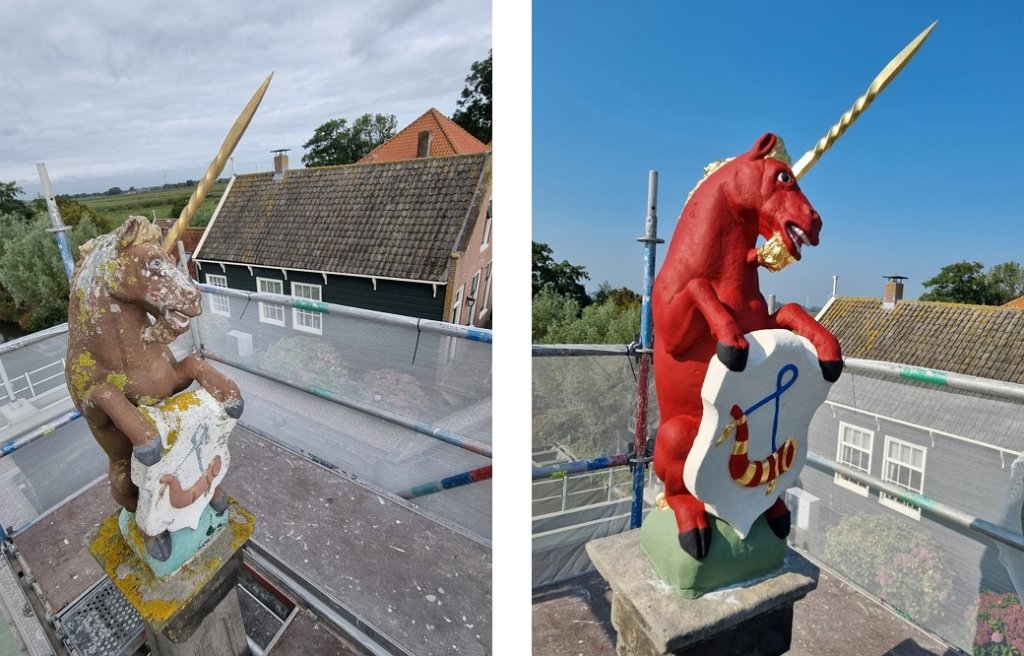
In the 16th century it proved necessary to better secure the wet heart of North Holland. In 1544 Emperor Charles V (1500-1558) decreed that the last two open sea gates at Edam and Krommenie should be closed. Nothing came of this until in 1565 a board of dike reeves and heemraden was appointed to do the job. This laid the foundation for the Hoogheemraadschap van de Uitwaterende Sluizen in Kennemerland and West Friesland. This new water board took over the management of the locks. It carried in its coat of arms the double-headed imperial eagle, standing on top of a lock, as can still be seen on a coat of arms bricked into the Noordersluis.
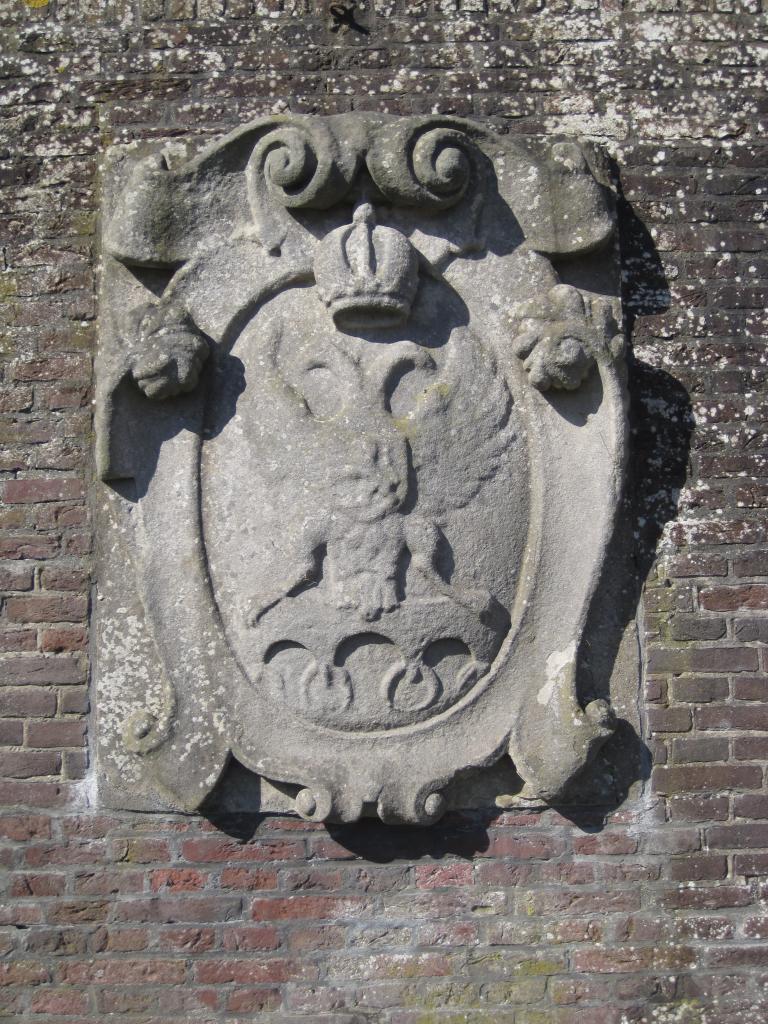
In the years 1589-1595, Uitwaterende Sluizen renewed the obsolete locks in the Schardam, first the Noordersluis and later the Zuidersluis. The wood was replaced by stone. This project involved the Alkmaar native Willem Jans Benningh (c.1570-1636), one of the most famous lock builders of his time. A commemorative stone was placed in the Zuidersluis: 'Om uyt telaeten het binnne-waeters gewelt, sij ick hier van Dickgraef en Heemraeden gestelt'. Presumably a year stone was also placed at that time, the stone with the inscription 'anno'. Indeed, the decoration of this stone is clearly 16th-century. There was probably also a stone with the year of the completion of the lock.
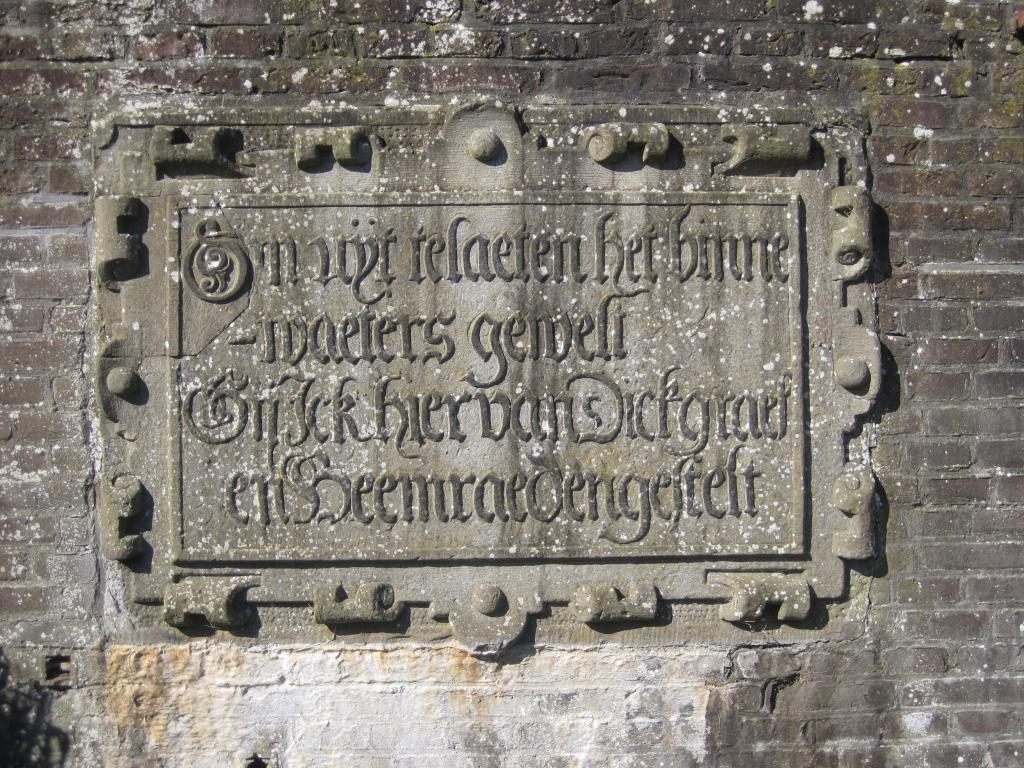
The North Lock had shown defects when it was built, and after more than a century a new lock had to be built, completed in 1712. This lock was also fitted with a commemorative stone, an oval stone with the name of the Water Board and the year. The decorative border around it bears the name of Squire Gerard van Egmond van de Nijenburg (1646-1712), as a memento of this Alkmaar squire who was dike grave of Uitwaterende Sluizen for thirty years. His family long played an important role in the administration of various North Holland water boards.
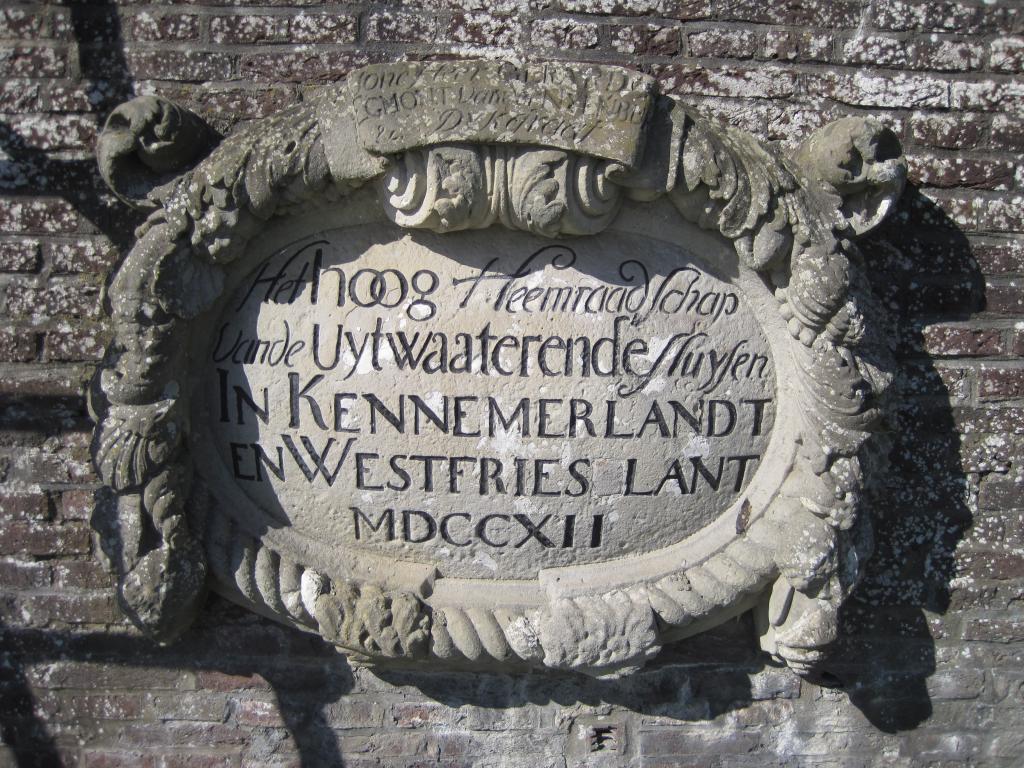
In 1737 it appeared that the pile works of the harbor of Schardam had fallen prey to the pile worm, a borer mussel that was advancing in those years. At the time, the dikes were reinforced with beams and poles, and the pile worm completely destroyed all that wood. In addition, the locks were leaking more and more - it was suspected that it was because of the Zuidersluis, since the Noordersluis had not long been renewed. It was decided to dam and drain the lock, and then it turned out that the bollworm had also taken the Zuidersluis to graze.
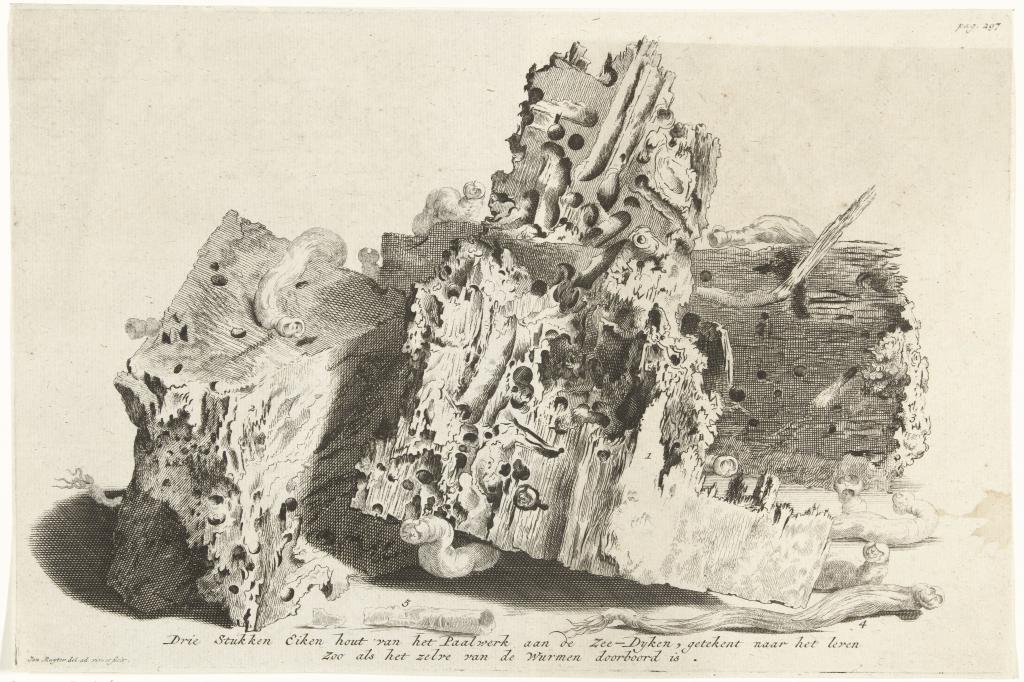
The South Lock was completely renovated: even the walls were so bad that they had to be replaced, although some of it was reused. It took over a year for the lock to work properly again. The annual stone from the 16th century was reused, but a new annual stone was placed on the other side of the lock. This stone clearly has 18th-century decoration.
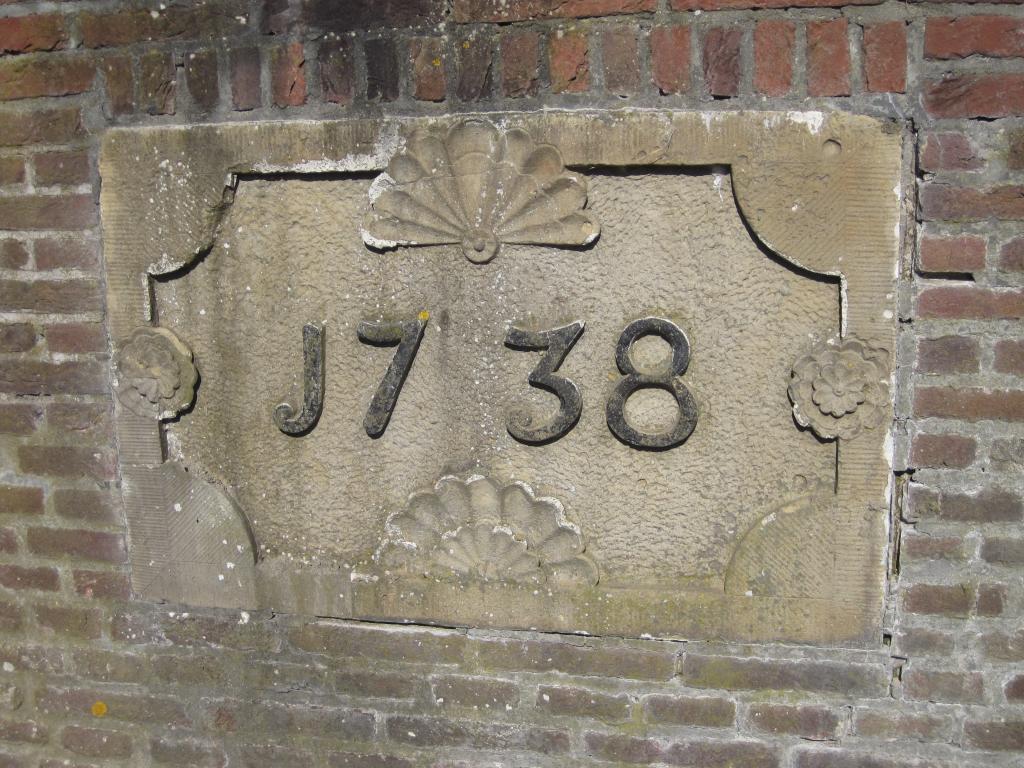
The 18th-century locks proved to be very durable, although things changed after that. After the 1916 flood disaster, the Zuiderzee dikes were raised; the Schardam locks were also made higher. Recently, the monumental locks were fitted with new slides, allowing better regulation of the drainage and inlet. The iron fencing on the lock bridges, however, is probably still 18th-century; and north of the locks still stands the house Schardam 21, a National Monument that in earlier times was the house of the lockkeeper.
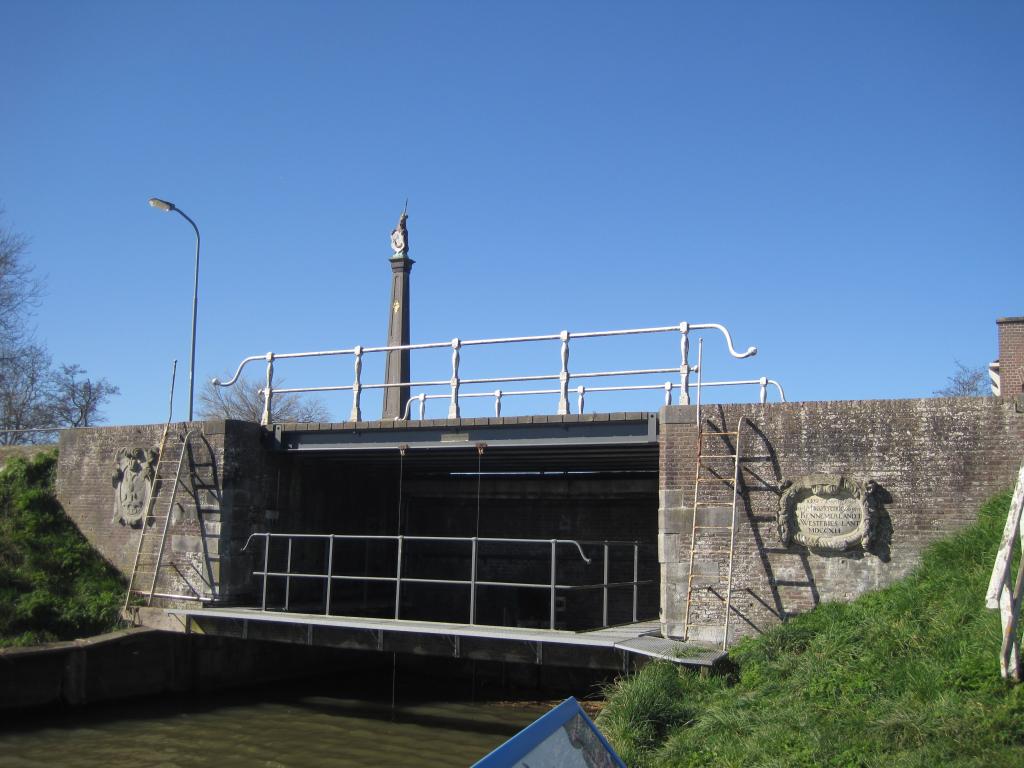
In 2021-2022, both locks were modified with a new slide consisting of two parts. This allows the locks to be closed partially or completely. This allows the locks to hold back high water when the situation calls for it. At the same time, the function of letting water in or out is maintained.
Additional
- The locks at Schardam are on the walking route of the third leg of the Zuiderzee Trail.
- Those biking the Zuiderzee Route will also pass over the locks, in the Amsterdam-Hoorn stretch.